Do you suffer from 'gluteal amnesia'? Pilates can help
Thanks to a lovely Fix Program regular, I had such a laugh reading this article about men over 40 losing their buttocks. Girls, don't laugh - we tend to lose them too. Men's tend to disappear around to the front to their bellies and we women seem to have them slide down the backs of our legs.
http://www.afr.com/Page/Uuid/033a59e0-39fb-11e3-a334-c26c4e617206
But is all seriousness, the buttock muscles are terribly important in supporting our pelvis and back, holding our hips in a good alignment in our pelvis and in providing us with the power to get up out of seats or to walk and run. Underactive and weakened gluts will result in a greater instability about the hip and pelvic regions. This can result in an increased load transferred to the lower back above and to the hamstring muscles below.
Some of us can feel that our hamstring muscles seem to become tighter as we get older. The hamstrings are a powerful and often over worked group of muscles running from your sit bones of your pelvis to the backs of your knee. If you once had quite flexible stretchy legs and hamstrings and now notice they are becoming tighter and stiffer, then perhaps your buttock muscles are weakened? Perhaps you are reliant on these hamstrings for more power and stability about the pelvis in your day than previously? Is there an imbalance about the muscles of your hip and leg?
Has your brain developed 'gluteal amnesia'?
So how do you 'find' your buttocks again? The solution is often a simple one, but also quite a challenge for some brains! Often you need the kind and expert assistance with appropriate cues from your favourite physiotherapist to discover these muscles again. Here are my top 3 Pilates exercises to firstly find, awaken and then challenge your buttocks.
Step 1: Let's find our buttock muscles again with 'Virtual reality leg lifts'
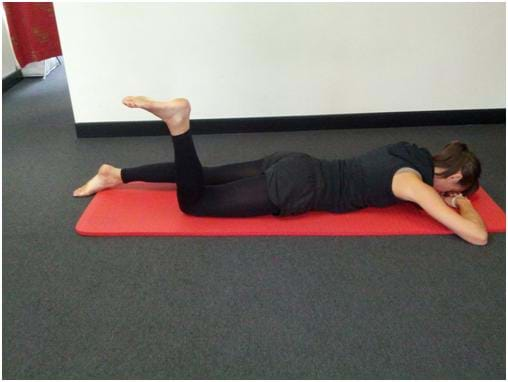
Lie on your tummy with your knee bent to 90 degrees. Imagine your thigh is stuck to the mat and unable to lift off.
Gently lift your pelvic floor muscles and deepen your navel, becoming aware of the subtle tightening between your hip bones and lower belly coming off the mat. Try holding these muscles on while you breathe. Next, imagine you are lifting the foot of your bent leg towards the sky. But remember, you can't as it is stuck to the mat.
Where do you notice the muscle activating? Is it in your buttock region or down the back of your leg?
If you feel that your buttock is not engaging, try placing your hand on the buttock and imagine very gently holding a piece of paper between your buttock cheeks. Feel it now?
So, try again. Lift your pelvic floor, gently deepen your navel, imagine the paper held gently between you cheeks and then an imaginary lift on your foot towards the sky. Any luck?
Practice, practice again- it is really a brain challenge! This is the hardest step – rewiring your brain to habitually activate your buttock. If all else fails, practice on the other side and see if you can activate your buttock on this side before returning to the other.
You really must master this before progressing to step 2.
Step 2: Awaken your buttocks with great squat technique and side stepping squats
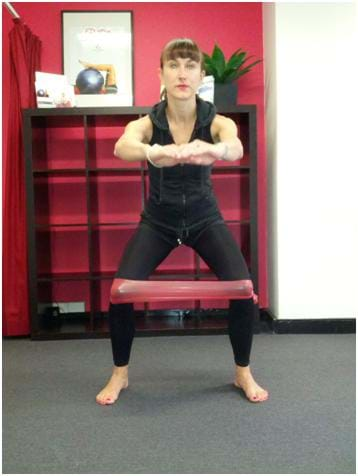
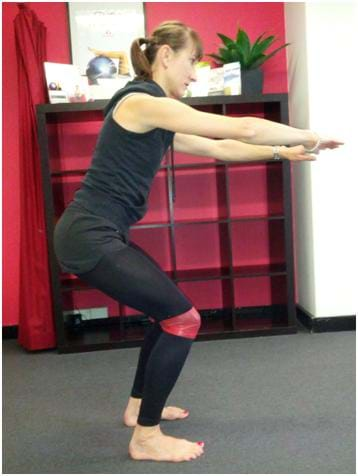
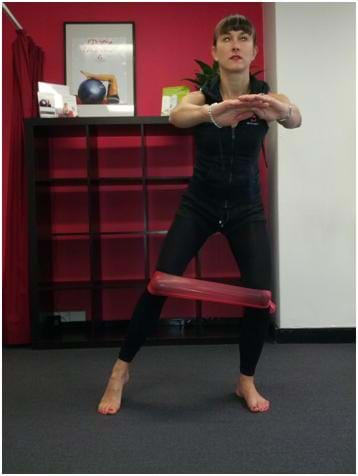
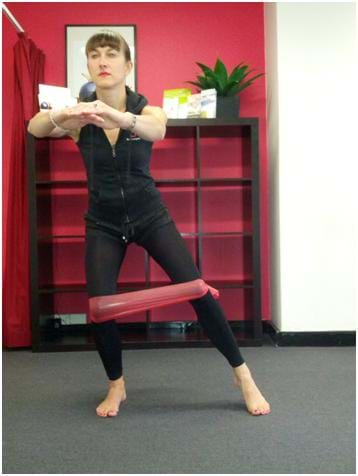
We should all know how to squat safely but here's a quick recap.
Standing with your feet hip width apart, find your pelvis neutral posture. Become aware of your pelvic floor muscles lifting and abdominals deepening as you lift through your waists gently. Fold your trunk over your hips as if you were aiming to sit onto a chair, your knees bending and your weight shifting into your heels. Remember your tall waist posture and unchanging spinal curves. AS you push up to a standing posture, push through your heels and be aware of your buttock muscles activating.
You can make this more challenging with your theraband tied around your knees, or with sidestepping squats across the room. Remember your sinking hips, folding trunk, tall waists and pushing up through your heels. When sidestepping, feel your leading leg doing most of the work.
Wake up those buttocks.
Step 3: Challenge your buttocks and build endurance with single leg squats, step-ups and jumps
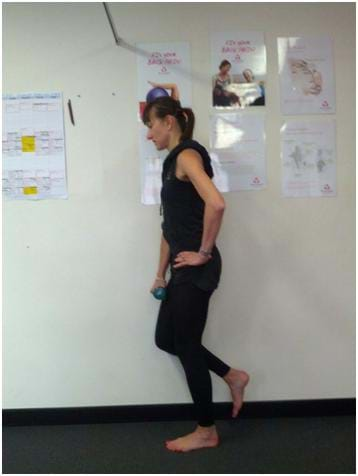
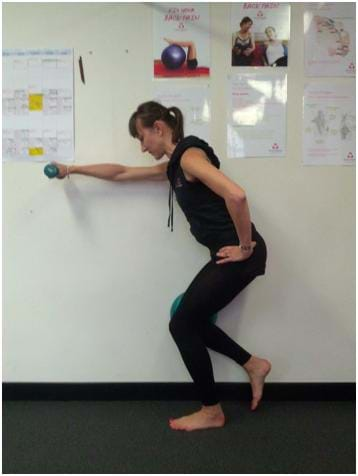
So now you have found your buttocks and your brain knows what it's like to use and feel them, you can really go for it. Single leg squats, with or without weights, lunges, step ups onto a step or parkbench. All of these will build endurance in your new found gluteals and give you a shapely derriere.
Remember the basics – good pelvic posture ('neutral' and no tipping sideways), tall waists, pelvic floor and deep abdominal engagement and pushing through your heels. Even a cupped hand over the buttock cheek will help to reinforce to your brain that you are activating well and feeling that lovely bulky butt!
Good luck rediscovering a shapely behind and giving your back, posture and tight leg muscles a lending hand too.